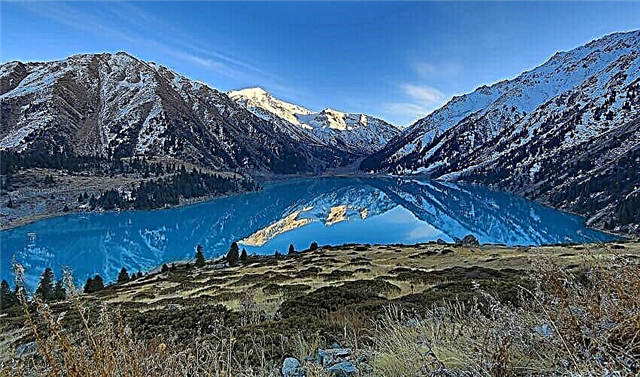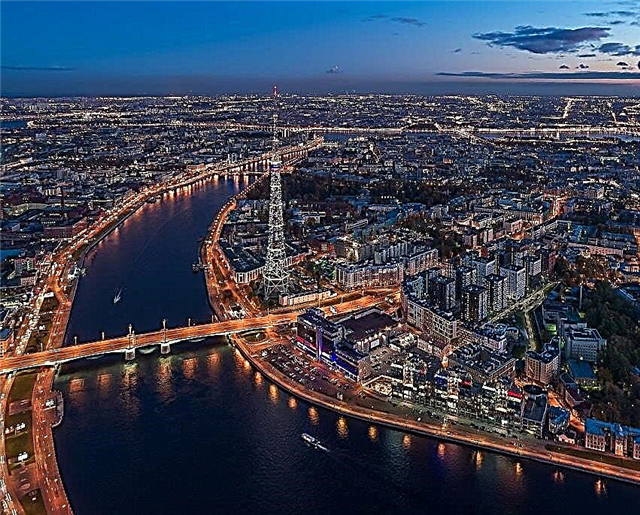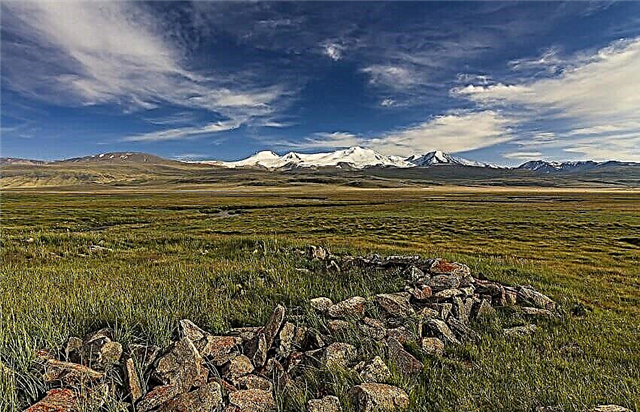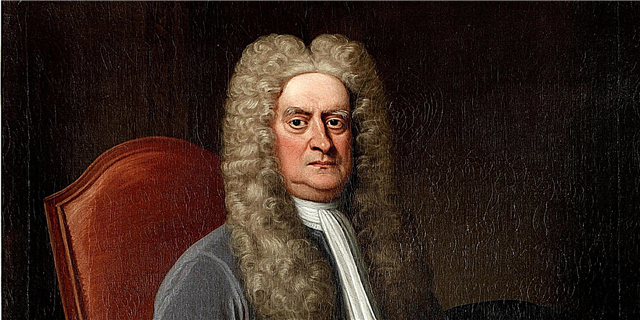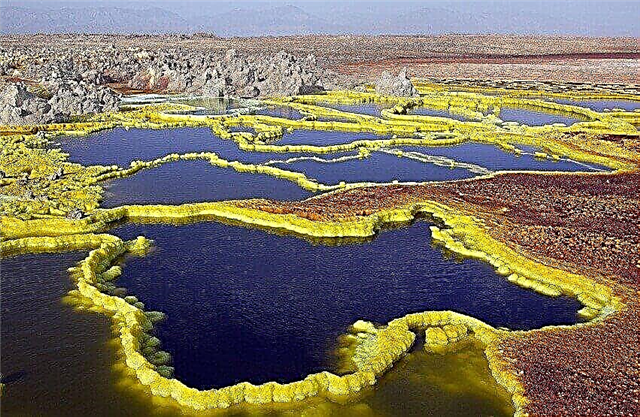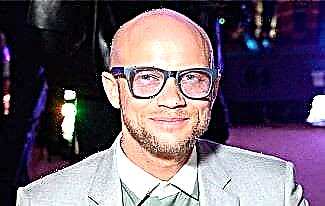In the mentality of the Russian people, Paris occupies a special place, somewhere near the Kingdom of Heaven. The capital of France is considered the capital of the world and a must-see destination for overseas travel. "See Paris and Die!" - how much further! Millions of foreigners settled in the capital of France for years and decades, but the above phrase came to mind only to a Russian person.

The reason for such popularity of Paris among Russian people is simple and banal - the concentration of educated, talented, or who consider themselves to be such people. If in Russia a cultured person (no matter what content was put into this word) in order to communicate with his own kind, needed to shake in a carriage or sleigh tens of miles to the provincial city or St. Petersburg, in Paris dozens of such people sat in every cafe. Dirt, stench, epidemics, 8-10 sq. meters - everything faded before the fact that Rabelais was sitting at that table, and sometimes Paul Valerie comes here.

French literature also added fuel to the fire. The heroes of French writers roamed all these “ryu”, “ke” and other “dances”, spreading around themselves purity and nobility (until the despicable Maupassant entered). For some reason, D'Artagnan and the Count of Monte Cristo strove to conquer Paris! Three waves of emigration added to the heat. Yes, they say, the princes worked as taxi drivers, and the princesses ended up in the Moulin Rouge, but is this a loss compared to the opportunity to drink excellent coffee with an equally wonderful croissant in a street cafe? And next to it are the poets of the Silver Age, avant-gardists, cubists, Hemingway, go Lilya Brik ... The figures of the third wave of emigration were especially successful in raising Paris. They didn’t have to work as taxi drivers - the velfer allowed them to take descriptions of the “capital of the world” in earnest.
And when the possibility of a relatively free visit to Paris opened up, it turned out that almost everything in the descriptions is true, but there is another truth about Paris. The city is dirty. There are a lot of beggars, beggars and just people for whom a foreign tourist is a source of criminal income. 100 meters from the Champs Elysees, there are natural stalls with trendy Turkish goods. Parking costs from 2 euros per hour. Hotels in the center, even the most filthy, hang 4 stars on the signboard and tear up a lot of money from the guests.

In general, when describing the advantages, one should not forget about the disadvantages. Paris is like a living organism, the development of which is ensured by the struggle of contradictions.
1. “The Earth begins, as you know, from the Kremlin”, as we remember from school days. If the French had their own Vladimir Mayakovsky, instead of the Kremlin, the Island of Cité would appear in a similar line. Here, the remains of ancient settlements were found, here, in Lutetia (as the settlement was then called), the Celts lived, here the Romans and French kings performed judgment and punishment. The elite of the Knights Templar were executed on the Cité. The southern coast of the island is called the Jewelers' Embankment. The French name of this embankment - Quet d'Orfevre is familiar to all fans of Georges Simenon and Commissioner Maigret. This embankment is indeed the headquarters of the Parisian police - it is part of the huge Palace of Justice. Cité is densely built up with historic buildings, and, if you wish, you can wander around the island all day long.

From a bird's eye view, the Cite Island looks like a ship
2. No matter how much one would like to correlate the name “Lutetia” with the Latin word lux (“light”), it will not be possible to do it with the slightest presence of objectivity. The name of this Gallic settlement on one of the islands in the middle reaches of the Seine is most likely derived from the Celtic "lut" meaning "swamp". The Parisian tribe that inhabited Lutetia and the surrounding islands and shores did not send their deputies to the Gallic assembly convened by Julius Caesar. The future emperor acted in the spirit of "whoever did not hide, I am not to blame." He defeated the Parisians and set up a camp on their island. True, he was so small that there was only enough space for a military camp. Baths and a stadium, that is, the Colosseum, had to be built on the shore. But the future Paris was still far from the capital - the center of the Roman province was Lyon.
3. Modern Paris is two-thirds the work of the hands and mind of Baron Georges Haussmann. In the second half of the 19th century, this prefect of the Seine district, supported by Napoleon III, radically changed the face of Paris. The French capital has turned from a medieval city into a metropolis convenient for living and moving around. Osman was not an architect; now he would be called a successful manager. He ignored the historical value of the 20,000 demolished buildings. Instead of giving away antiquities like a cesspool, the Parisians received a clean and bright city, crossed by wide straight alleys, boulevards and avenues. There was a water supply and sewerage system, street lighting and a lot of green spaces. Of course, Osman was criticized from all sides. Napoleon III was even forced to fire him. However, the impetus given to the restructuring of Paris by Baron Haussmann was so strong that work on his plans continued in the first half of the twentieth century.

Baron Osman - second from right
4. There are practically no whole buildings of the Roman era in Paris, however, the location of many of them has been established quite accurately. For example, a huge amphitheater was located on the site of the current intersection of Rue Racine and Boulevard Saint-Michel. In 1927, it was in this place that Samuel Schwarzbard shot Simon Petliura.
5. In general, the toponymy of Paris is little subject to change. And the French are very little inclined to rethink history - well, there was such an event in time immemorial, and okay. Sometimes they even emphasize - they say, after 1945, the names of only three streets in Paris were changed! And the Place de Gaulle was not renamed into Place Charles de Gaulle, and now it bears the convenient, quickly and easily pronounced name Charles de Gaulle Étoile. This toponymic conservatism did not affect the St. Petersburg street located in the VIII district of Paris. It was paved and named after the Russian capital in 1826. In 1914, like the city, it was renamed Petrogradskaya. In 1945, the street became Leningradskaya, and in 1991 its original name was returned.
6. As has been known since the mid-1970s, “There are inscriptions in Russian in a public Parisian toilet”. However, Russian words can be seen not only in Parisian toilets. In the French capital there are streets named after Moscow and the Moskva River, Peterhof and Odessa, Kronstadt and the Volga, Evpatoria, Crimea and Sevastopol. Russian culture in Paris toponymy is represented by the names of L. Tolstoy, P. Tchaikovsky, p. Rachmaninov, V. Kandinsky, I. Stravinsky and N. Rimsky-Korsakov. There are also Peter the Great and Alexander III streets.
7. Notre Dame Cathedral contains one of the nails with which Christ was crucified. In total, there are about 30 such nails, and almost all of them either performed miracles or, at least, do not rust. A nail in Notre Dame de Paris cathedral rusts. It is everyone's personal choice to regard this as evidence of authenticity or evidence of a forgery.
8. A unique Parisian landmark is the Center for Art and Culture, named after Georges Pompidou, the President of France, who initiated the construction of the Center. The complex of buildings, similar to an oil refinery, is visited by millions of people every year. The Center Pompidou houses the National Museum of Modern Art, a library, cinemas and theater halls.

9. The University of Paris, as follows from the bull of Pope Gregory IX, was founded in 1231. However, even before the official status was given, the current Latin Quarter was already a concentration of intellectuals. However, the current buildings of the Sorbonne have nothing to do with the college dormitories that corporations of students built for themselves in the Middle Ages. The current Sorbonne was built in the 17th century by order of the Duke of Richelieu, a descendant of the famous cardinal. The ashes of many Richelieu are buried in one of the buildings of the Sorbonne, including the one whom the inhabitants of Odessa simply call “Duke” - Armand-Emmanuel du Plessis de Richelieu served as the governor of Odessa for a long time.

10. Saint Genevieve is considered the patroness of Paris. She lived in the 5th - 6th centuries A.D. e. and became famous for the numerous healings of the sick and the help of the poor. Her conviction allowed the Parisians to defend the city from the invasion of the Huns. Saint Genevieve's sermons convinced King Clovis to be baptized and make Paris his capital. The relics of Saint Genevieve are kept in a precious reliquary, which was adorned by all French kings. During the French Revolution, all jewelry from the shrine was stripped and melted down, and the ashes of Saint Genevieve were ceremoniously burned on the Place de Grève.

11. Paris streets were obliged to have a proper name only by a royal decree of 1728. Before that, of course, the townspeople called the streets, mainly by some sign or the name of the noble owner of the house, but such names were not written down anywhere, including on houses. And the numbering of houses without fail began in the early 19th century.
12. In Paris, famous for its pastries, more than 36,000 artisanal bakers still work. Of course, their number is gradually decreasing, and not only because of competition with large manufacturers. Parisians are simply constantly reducing their consumption of bread and baked goods. If in the 1920s the average Parisian ate 620 grams of bread and rolls per day, then in the 21st century this figure has become four times less.

13. The first public library opened in Paris in 1643. Cardinal Mazarin, who in real life did not at all resemble the half-caricatured image created by Alexander Dumas the father in the novel "Twenty Years Later," donated his huge library for the founded College of the Four Nations. The college did not exist for long, and its library, open to all visitors, is still working, and the medieval interiors are almost completely preserved. The library is located in the eastern part of the Palais des Académie Française, roughly on the spot where the Tower of Nels stood, famed by another prominent writer, Maurice Druon.

14. Paris has its own catacombs. Their history, of course, is not as interesting as the history of the Roman dungeons, but everything and underground Paris has something to boast about. The total length of the galleries of the Parisian catacombs exceeds 160 kilometers. A small area is open for visiting. The remains of people from many city cemeteries were “moved” to the catacombs at different times. The dungeons received rich gifts during the years of the revolution, when victims of terror and victims of the struggle against terror were brought here. Somewhere in the dungeons lie the bones of Robespierre. And in 1944, Colonel Rol-Tanguy gave the order from the catacombs to start a Paris uprising against the German occupation.

15. Many interesting facts and events are associated with the famous Parisian park Montsouris. The moment of opening the park - and Montsouris was broken at the behest of Napoleon III - was overshadowed by tragedy. A contractor who discovered in the morning that water had disappeared from a beautiful pond with water birds. And also Vladimir Lenin was very fond of the Montsouris park. He often sat in a seaside wooden restaurant that has survived to this day, and lived nearby in a small apartment that has now been converted into a museum. In Montsouris, the sign of the prime meridian was established “according to the old style” - until 1884 the French prime meridian passed through Paris, and only then it was transferred to Greenwich and made universal.

16. The Parisian metro is very different from the Moscow one. The stations are very close, trains run slower, voice announcements and automatic door openers only work on a small number of new cars. The stations are extremely functional, no decorations. There are enough beggars and clochards - homeless people. One trip costs 1.9 euros for an hour and a half, and the ticket has imaginary universality: you can go by metro, or you can take a bus, but not on all lines and routes. The train system looks like it was created to deliberately confuse passengers. The penalty for traveling without a ticket (that is, if you accidentally boarded a train on another line or the ticket expired) is 45 euros.

17. The Human Beehive has been functioning in Paris for over 100 years. It originated in the French capital thanks to Alfred Boucher. There is a category of art masters who are supposedly destined to make money, and not seek worldwide fame. Boucher was one of those. He was engaged in sculpture, but did not sculpt anything supernatural. But he knew how to find an approach to clients, was enterprising and sociable, and earned a lot of money. One day he wandered into the southwestern outskirts of Paris and went to drink a glass of wine in a lonely tavern. In order not to be silent, he asked the owner about the prices for local land. He replied in the spirit that if someone offered at least a franc for her, he would consider it a good deal. Boucher immediately bought a hectare of land from him. A little later, when the pavilions of the 1900 World Exhibition were demolished, he bought a wine pavilion and a lot of all kinds of constructive junk like gates, elements of metal structures, etc. From all this, a complex of 140 rooms was built, suitable both for housing and for workshops of artists - in each the back wall was a large window. Boucher began renting out these rooms for cheap to poor artists. Their names are now breathed out by connoisseurs of new directions in painting, but, to put it bluntly, “Beehive” did not give new Raphael or Leonardo to mankind. But he gave an example of disinterested attitude towards colleagues and simple human kindness. Boucher himself lived all his life in a small cottage near the "Ulya". After his death, the complex still remains a haven for the creative poor.
18. The Eiffel Tower could well have looked different - it was proposed to build it even in the form of a guillotine. Moreover, it should be called differently - "Bonicausen Tower". This was the real name of the engineer who signed his projects with the name "Gustave Eiffel" - in France they have long been treated with, to put it mildly, distrust of Germans, or people with surnames similar to German. Eiffel by the time of the competition for the creation of something like that, symbolizing modern Paris, was already a very respected engineer. He has implemented projects such as the bridges in Bordeaux, Florac and Capdenac and the viaduct in Garabi. In addition, Eiffel-Bonikausen designed and assembled the frame of the Statue of Liberty. But, most importantly, the engineer learned to find ways to the hearts of budget managers. While the competition commission ridiculed the project, cultural figures (Maupassant, Hugo, etc.) turned into “undersigned” under protest petitions, and the princes of the church shouted that the tower would be higher than Notre Dame Cathedral, Eiffel convinced the minister in charge of the work of the relevance your project. They threw a bone to the opponents: the tower would serve as a gateway for the World Exhibition, and then it would be taken apart. The construction worth 7.5 million francs paid off already during the exhibition, and then the shareholders (Eiffel himself invested 3 million in the construction) only managed (and still have time to count) profits.
19. There are 36 bridges between the banks of the Seine and the islands. The most beautiful is the bridge named after the Russian Tsar Alexander III. It is decorated with figurines of angels, pegasus and nymphs. The bridge was made low so as not to obscure the panorama of Paris. The bridge, named after his father, was opened by Emperor Nicholas II. The traditional bridge, where the spouses broadcast the locks, is the Pont des Arts - from the Louvre to the Institut de France. The oldest bridge in Paris is the New Bridge. It is more than 400 years old and is the first bridge in Paris to be photographed.In the place where the Notre Dame Bridge now stands, bridges have stood since the time of the Romans, but they were demolished by floods or military operations. The current bridge will celebrate its 100th anniversary in 2019.

20. The City Hall of Paris is located on the right bank of the Seine in a building called the Hôtel de Ville. Back in the XIV century, the merchant provost (the foreman, whom the merchants, who had no civil rights, elected for loyal communication with the king), Etienne Marcel bought a house for merchant meetings. After 200 years, Francis I ordered to build a palace for the authorities of Paris. However, due to certain political and military events, the mayor's office was completed only under Louis XIII (the same one under which the Musketeers of Dumas-father lived), in 1628. This building has seen the entire more or less documented history of France. They arrested Robespierre, crowned Louis XVIII, celebrated the wedding of Napoleon Bonaparte, proclaimed the Paris Commune (and burned the building along the way) and carried out one of the first Islamic terrorist attacks in Paris. Of course, all solemn city ceremonies are held in the mayor's office, including the awarding of well-studied students.


